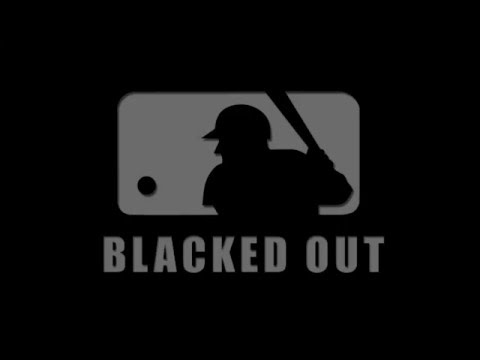For several years now, Major League Baseball has been ramping up efforts to keep America’s pastime from slipping into America’s past. To address complaints that the game is too slow, it started timing pitches. To improve accuracy, it introduced instant replay challenges. To add drama, it created a postseason wild card game. But MLB has yet to do much to address television blackouts and that is a big threat to the growth of baseball.
Let’s imagine for a minute that I don’t already love baseball. I want to give it a shot and I grew up watching my local Triple A team, the Iowa Cubs. Can I watch the Chicago Cubs? No, they’re blacked out unless I get a satellite package that includes Comcast Sports.
Ok, I’m a Green Bay Packer football fan. What about the Milwaukee Brewers? Still no.
I know some Minnesota Twins fans; can I watch that team? Not a chance.
Kansas City is a really cool place. Maybe I can watch the Royals? Nope.
I was born in Chicago. What about the White Sox? Stop me if you’ve heard this before, but nah.
Uh, well, I like winning. Can I watch the St. Louis Cardinals? Not unless I get a cable package that offers Fox Sports Midwest.
And this affects more than fans of “local” teams. Pittsburgh Pirates or Cincinnati Reds fans living in Iowa can’t watch their out-of-market team any time they play in-market division rivals. The same applies to fans of the Detroit Tigers and Cleveland Indians.
Why does MLB make it so difficult for active and potential fans to watch a game? Decades ago, the original reason for blackouts was to draw fans to the games in person. The problem is there are 351 miles between my house and Wrigley Field. Once I add in the cost of tickets, a place to stay, and a $10 beer at the stadium, going to a game is a major undertaking. How many people who are casual fans or are still exploring baseball will jump through these hoops?
Blackouts also occur because MLB makes a lot of money from regional networks for broadcast rights. But if the number of people who watch baseball dwindles, so does the revenue for the networks and the league. The median age of an MLB fan is reportedly 53 years old. As those fans get even older, MLB will need to appeal to younger generations who may not be as eager or able to spend money on cable.
As I write this on a Saturday in September, I can watch 10 MLB games with my $109.99 MLB.TV subscription. Five games, 33 percent of today’s schedule, are blacked out. This is actually lower because the Cubs and Cardinals are playing each other. Meanwhile, college football is available on my local networks almost all day. Why would I bother with paying for an online baseball subscription that doesn’t give me what I want when football is out there for free?
MLB did make changes to its subscription services, but only after being sued. Next year, online subscribers can watch local games too! But only if they also have a cable or satellite provider. What a great deal. I pay about $350 annually to Sling and MLB.TV and it’s still not enough to watch a team whose home games are 5 hours away. I need a cable subscription, which is outside of this twenty-something’s budget.
Cable subscriptions, like blackouts, are becoming outdated. In this on-demand age where so much entertainment is available, people won’t just accept something that’s not good. Baseball can do more to prove it’s adapting to the future if it isn’t strictly aligned with an aging service.
Revamping the way baseball fans can watch the game would be a huge effort because of all the money and networks involved. But if MLB is serious about growing the game and bringing in new fans, making more games available needs to be a priority. America’s love of baseball may depend on it.


One response to “MLB blackouts give fan base growth a black eye”
I used to be able to get around this w/ a VPN to mask my IP address but they cracked down on that this year too. If MLBTV put half as much effort into the actual product as they do to enforce blackout restrictions they might actually gain some subscribers. After more than a decade of existence their players/apps are still buggier than a fast-food chinese restaurant.